The Future of AI and ML Development – Trends and Predictions
- November 1, 2023
-
2794 Views
- by Ishan Vyas
Table of Contents
- Multi-modal Learning
- AI-Based Cybersecurity
- Enhanced Language Modeling
- Robotics & AI
- Growing Emphasis on Data Security and Regulations
- The Overlap between AI and IoT
- The Growing Importance of Augmented Intelligence
- Hyper Automation
- Bias Removal in ML
- Digital Twins Drive the Industrial Metaverse
- Concluding Thoughts
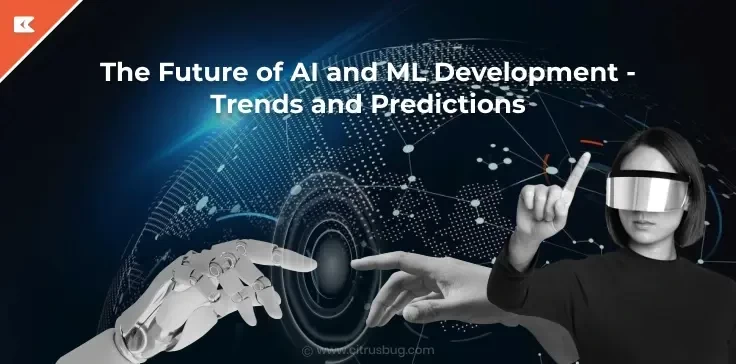
Artificial intelligence has taken the world by storm thanks to the emergence of ChatGPT. It is a new AI language model that has disrupted the way we perform searches. It can potentially de-track the significance of modern search engines in the coming years.
Similarly, we are seeing the use of Alexa and Netflix that make content binge-worthy recommendations, which becomes possible with the help of ML. This eases off the efforts required to speak to an agent.
Here is a list of our trends and predictions regarding the future of AI and ML Development.
Multi-modal Learning
AI has achieved a lot when it comes to multiple modalities with a solitary ML model. This includes text, speech, vision, and IoT sensor data.
Google DeepMind made headlines recently with Gato, a multimodal AI approach that can perform visual, language, and robotic movement activities.
Developers are on the look to search for innovative ways to integrate modalities to enhance day-to-day tasks like document comprehension.
A prime example of that is patient data accumulated and processed in healthcare systems can encompass genetic sequencing reports, clinical trial forms, visual lab Microsoft Data and AI Consulting results, and other scanned documents.
When the layout and presentation style of this data is done appropriately, it can assist doctors to comprehend better what they are searching for.
AI algorithms that have been trained with the help of multi-modal techniques like optical character recognition and machine vision can make the most out of results, thus enhancing medical diagnosis.
To maximize the potential of multi-modal techniques, you will need to put in hard work when it comes to hiring or even training data scientists with cross-domain skills. These include natural language processing (NLP) and machine vision methodologies.
AI-Based Cybersecurity
Brand new AI and ML methodologies will play a vital role in detecting and responding to cybersecurity threats. More and more enterprises will utilize AI defensively and proactively to ascertain anomalous behavior and new attack patterns.
Organizations that fail to include AI are at risk of falling behind the security, which can have a negative effect. To mitigate these risks effectively, many businesses are now investing in comprehensive cybersecurity services that combine AI-powered detection with robust response protocols.
Enhanced Language Modeling
ChatGPT has changed the way we think about interactively engaging AI. This is a good reference point for a wide array of use cases in fields like marketing, automated customer support, and user experiences.
In 2023 and beyond, you can expect a growing demand for quality control aspects of these enhanced AI language models. A lot has already been said about the inaccuracy of results in coding. In the coming years, companies will face a backlash against imperfect product descriptions and dangerous advice.
This will help companies try to find ways to explain how and when these tools generate errors.
Robotics & AI
There has been an emerging partnership between AI and robotics, which has led to a revolution in developing smart and unidentified robots that can perform complex tasks.
Growing Emphasis on Data Security and Regulations
In this digital age, data is the new money. Simply put, it is the most precious resource that organizations must shield at all costs. With the help of AI and ML coming into play, it is only going to enhance the amount of data they handle, and the risks connected with it.
A prime example of that is we see a lot of backups and archives of massive amounts of personal information, which is predicted to be an expanding privacy risk as time goes by.
With the introduction of regulations like GDPR, it has become quite expensive to make privacy violations.
With time, as the pressure to meet these regulations increases, companies will be required to avail the services of data scientists and analysts to stay compliant and be one step ahead in AI and ML trends.
The Overlap between AI and IoT
The fine line of difference between AI and IoT is blurring with time. While both technologies have independent qualities, when they are combined, they create more exclusive opportunities. Thanks to the partnership between AI and IoT, we have smart voice assistants like Siri and Alexa.
What is the primary reason for both these cutting-edge technologies to work so well in tandem? When you look closely, IoT is the digital nervous system, while AI is the brain that makes all the decisions.
The ability of AI to swiftly collect insights from data makes IoT systems smarter. We are already seeing a majority of enterprises in the USA utilizing IoT projects incorporating AI in some form.
With the help of this AI and ML trend, software developers and embedded engineers get one more reason to integrate AI/ML capabilities into their curriculum vitae.
The Growing Importance of Augmented Intelligence
If you are still wondering if AI will take away your jobs, the rise of augmented intelligence is a refreshing trend.
It creates wonderful opportunities to combine human beings and technology. This particular thing gives organizations the ability to enhance the efficacy and performance of their workforce. For example, with the WordPress ChatGPT plugin you can add 24/7 support on your website.
According to Gartner, by the time the year 2023 ends, we are going to see 40% of infrastructure and operations teams in large organizations utilizing AI-augmented automation. This will make way for increased productivity.
It is natural for their employees to be skilled in analytics and data science or get the opportunity to upskill on up-to-the-minute AI and ML technologies to get the right results.
Hyper Automation
Hyper automation is an effective way to enhance customer service and accelerate different processes. Several advanced technologies can assist in power hyper automation. This encompasses AI, ML, cognitive process automation, etc.
Besides enhancing the AI customer service experience, hyper-automation can also assist in achieving vital activities at a faster rate, like system integration and organization. It can also enhance worker productivity.
In short, the integration of customer service chatbots within the framework of hyper-automation showcases a holistic approach to enhancing operational efficiency, customer satisfaction, and overall business performance.
Bias Removal in ML
As AI adoption in enterprises becomes common, it will affect the lives of users on a daily basis. The challenge for AI bias and fairness will increasingly become a genuine concern.
The objective is to make sure that AI makes predictions objectively such that people are not discriminated against while applying for loans, applying for jobs,purchasing products online, or receiving medical treatment.
In the current year, we will see CIOs getting challenged with governing their data science practices and ML models. The reason is the intricate nature of these systems.
Executing responsible AI practices and making the organization equipped with proper tooling will go a long way to take on more urgency.
There will be an enhanced interest in tools for monitoring and mitigating bias in production AI to assist in catching and explaining the precise data points and features that resulted in the biased prediction.
Digital Twins Drive the Industrial Metaverse
In the last few years, we have seen leading industrial design and AI vendors connect the dots between digital twins. These are the virtual models that simulate reality and the metaverse. Nvidia and Siemens have collaborated to develop an industrial metaverse.
On the other hand, construction giant Bentley has implemented the term infrastructure metaverse. These advances may create a turning point for digital twins from an ambiguous technology to the main pillar of IT strategy.
While digital twins have been deployed across all industry sectors in the last few years, there will be an acceleration in the adoption rate in 2023.
We are seeing the intricacy of digital twins growing as time has passed. From relatively simple synthetic or real data-based digital twins to asset-based digital twins power-driven by IoT to customer-based and ecosystem-based digital twins.
We are also seeing digital twins being utilized to model and simulate human behaviors and to adjudge unconventional scenarios of the future. This has paved the way for the emergence of digital twins with traditional industrial replication and AI-based agent-based replication.
In the next phase, we will see the emergence of scientific computing, artificial intelligence, and industrial imitation to curate simulation intelligence, whose initial simulation elements are developed into operating systems.
The possibilities for digital twins are tremendous. It provides businesses with brand-new ways to take advantage of and forecast data. With more complex and versatile digital twins, enterprises can utilize simulation intelligence to predict real-world scenarios.
These include customer behaviors, the economic impact of the pandemic, and disease progression. Digital twins will become a crucial technology for organizations that are working on or expanding into drug design, smart cities, ESG modeling, and other applications.
Pilots of digital twin projects are being scaled and operationalized as we read this blog. CIOs should consider the way to include them as a part of the overall analytics architecture of the business and cloud/IT stack.
Companies must provide both a development environment and a production environment for running replications. Replication workloads are also compute-intensive, requiring on-demand computing on-prem or in the cloud.
CIOs can even utilize this technology to upskill employees. On top of this, companies should have a well-defined process for building, deploying, scoping, and monitoring digital twins.
Thus, digital twins product development technology can assist CIOs in transforming their businesses. However, the only condition is that the business and its employees should be prepared for it.
Concluding Thoughts
AI is an approximate $100 billion market and is projected to grow twentyfold by 2030. Trends like deep learning and NLP are enhancing customer experiences and enabling business growth. Most businesses are expected to adopt these trends with the right knowledge and execution.
Regarding AI and ML development, it’s crucial for businesses to partner with experienced providers who can offer tailored solutions and execute projects effectively. Finding the right expertise is key to harnessing the potential of these technologies for improved customer experiences and business growth. If you have specific questions or need more information about any of these trends or AI and ML development services, feel free to ask!
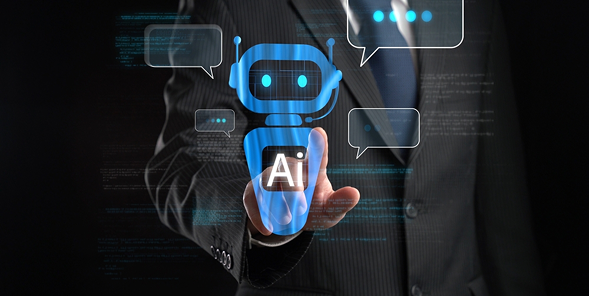
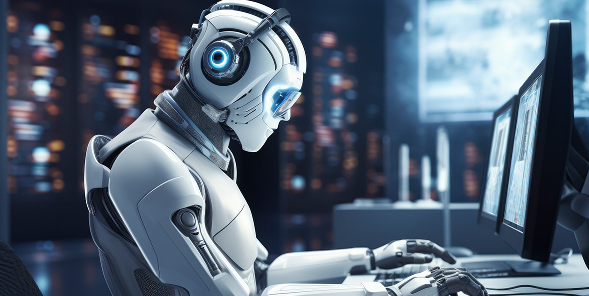

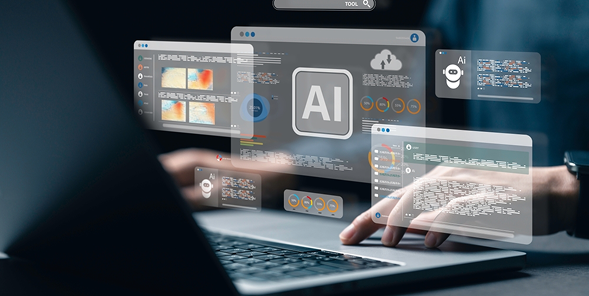

 SaaS Development
SaaS Development Web Application Development
Web Application Development Mobile Application Development
Mobile Application Development Custom Software Development
Custom Software Development Cloud Development
Cloud Development DevOps Development
DevOps Development MVP Development
MVP Development Digital Product Development
Digital Product Development Hire Chatbot Developers
Hire Chatbot Developers Hire Python Developers
Hire Python Developers Hire Django Developers
Hire Django Developers Hire ReactJS Developers
Hire ReactJS Developers Hire AngularJS Developers
Hire AngularJS Developers Hire VueJS Developers
Hire VueJS Developers Hire Full Stack Developers
Hire Full Stack Developers Hire Back End Developers
Hire Back End Developers Hire Front End Developers
Hire Front End Developers AI Healthcare Software Development & Consulting
AI Healthcare Software Development & Consulting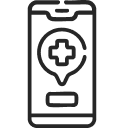 Healthcare App Development
Healthcare App Development EHR Software Development
EHR Software Development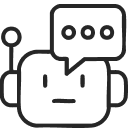 Healthcare AI Chatbot Development
Healthcare AI Chatbot Development Telemedicine App Development Company
Telemedicine App Development Company Medical Billing Software Development
Medical Billing Software Development Fitness App Development
Fitness App Development RPM Software Development
RPM Software Development Medicine Delivery App Development
Medicine Delivery App Development Medical Device Software Development
Medical Device Software Development Patient Engagement Software Solutions
Patient Engagement Software Solutions Mental Health App Development
Mental Health App Development Healthcare IT Consulting
Healthcare IT Consulting Healthcare CRM Software Development
Healthcare CRM Software Development Healthcare IT Managed Services
Healthcare IT Managed Services Healthcare Software Testing services
Healthcare Software Testing services Medical Practice Management Software
Medical Practice Management Software Outsourcing Healthcare IT Services
Outsourcing Healthcare IT Services IoT Solutions for Healthcare
IoT Solutions for Healthcare Medical Image Analysis Software Development Services
Medical Image Analysis Software Development Services Lending Software Development Services
Lending Software Development Services Payment Gateway Software Development
Payment Gateway Software Development Accounting Software Development
Accounting Software Development AI-Driven Banking App Development
AI-Driven Banking App Development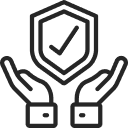 Insurance Software Development
Insurance Software Development Finance Software Development
Finance Software Development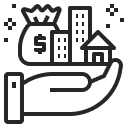 Loan Management Software Development
Loan Management Software Development Decentralized Finance Development Services
Decentralized Finance Development Services eWallet App Development
eWallet App Development Payment App Development
Payment App Development Money Transfer App Development
Money Transfer App Development Mortgage Software Development
Mortgage Software Development Insurance Fraud Detection Software Development
Insurance Fraud Detection Software Development Wealth Management Software Development
Wealth Management Software Development Cryptocurrency Exchange Platform Development
Cryptocurrency Exchange Platform Development Neobank App Development
Neobank App Development Stock Trading App Development
Stock Trading App Development AML software Development
AML software Development Web3 Wallet Development
Web3 Wallet Development Robo-Advisor App Development
Robo-Advisor App Development Supply Chain Management Software Development
Supply Chain Management Software Development Fleet Management Software Development
Fleet Management Software Development Warehouse Management Software Development
Warehouse Management Software Development LMS Development
LMS Development Education App Development
Education App Development Inventory Management Software Development
Inventory Management Software Development Property Management Software Development
Property Management Software Development Real Estate CRM Software Development
Real Estate CRM Software Development Real Estate Document Management Software
Real Estate Document Management Software Construction App Development
Construction App Development Construction ERP Software Development
Construction ERP Software Development




